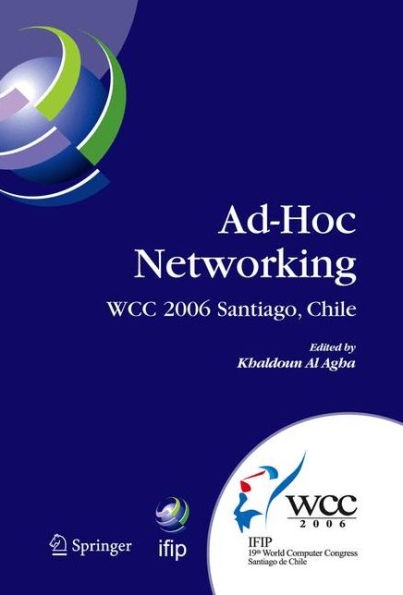5
1
9780387346359


Ad-Hoc Networking: IFIP 19th World Computer Congress, TC-6, IFIP Interactive Conference on Ad-Hoc Networking, August 20-25, 2006, Santiago, Chile / Edition 1 available in Hardcover

Ad-Hoc Networking: IFIP 19th World Computer Congress, TC-6, IFIP Interactive Conference on Ad-Hoc Networking, August 20-25, 2006, Santiago, Chile / Edition 1
- ISBN-10:
- 038734635X
- ISBN-13:
- 9780387346359
- Pub. Date:
- 07/27/2006
- Publisher:
- Springer US
- ISBN-10:
- 038734635X
- ISBN-13:
- 9780387346359
- Pub. Date:
- 07/27/2006
- Publisher:
- Springer US
109.99
In Stock

Product Details
| ISBN-13: | 9780387346359 |
|---|---|
| Publisher: | Springer US |
| Publication date: | 07/27/2006 |
| Series: | IFIP Advances in Information and Communication Technology , #212 |
| Edition description: | 2006 |
| Pages: | 188 |
| Product dimensions: | 6.10(w) x 9.25(h) x 0.02(d) |
From the B&N Reads Blog
